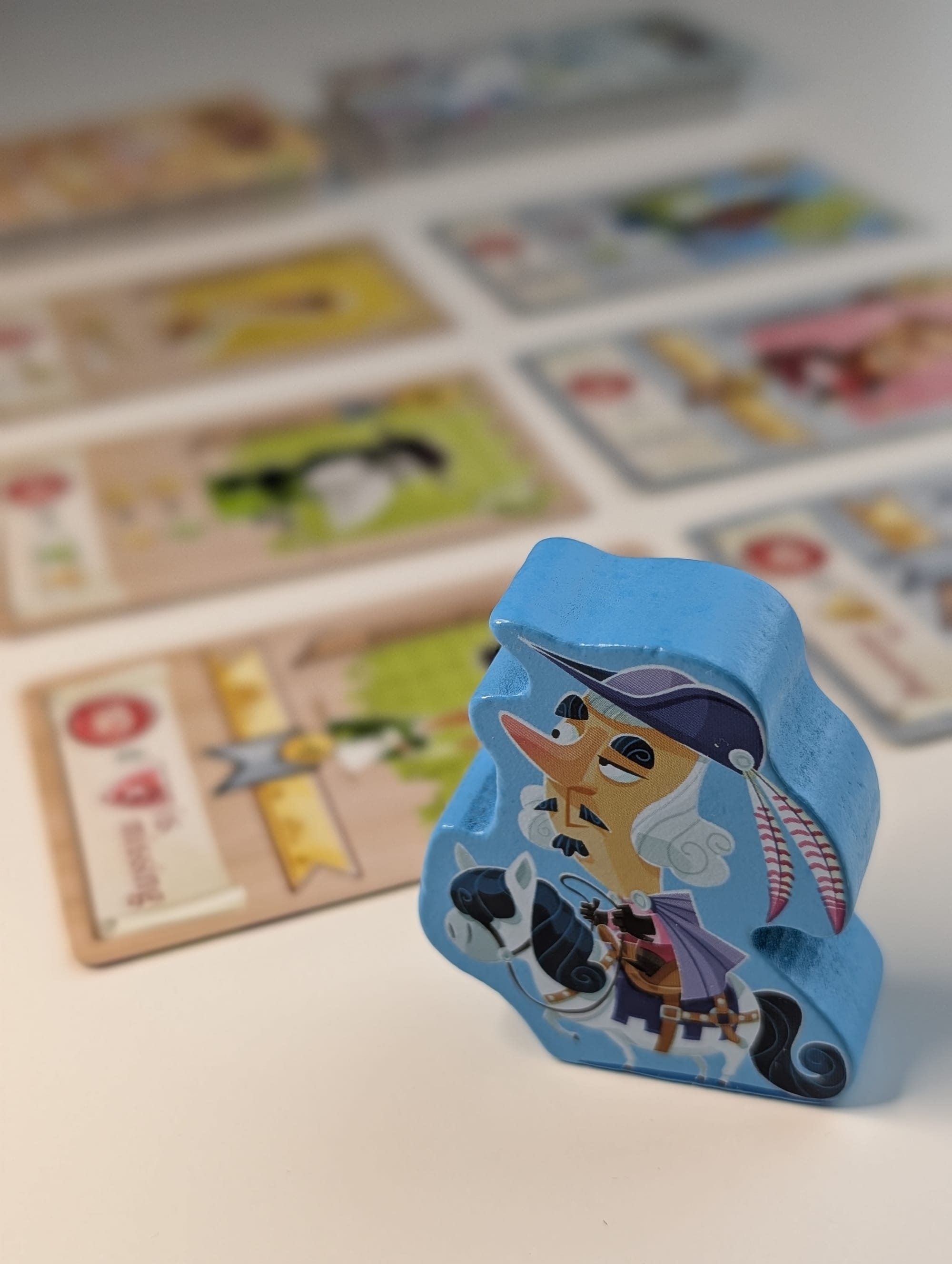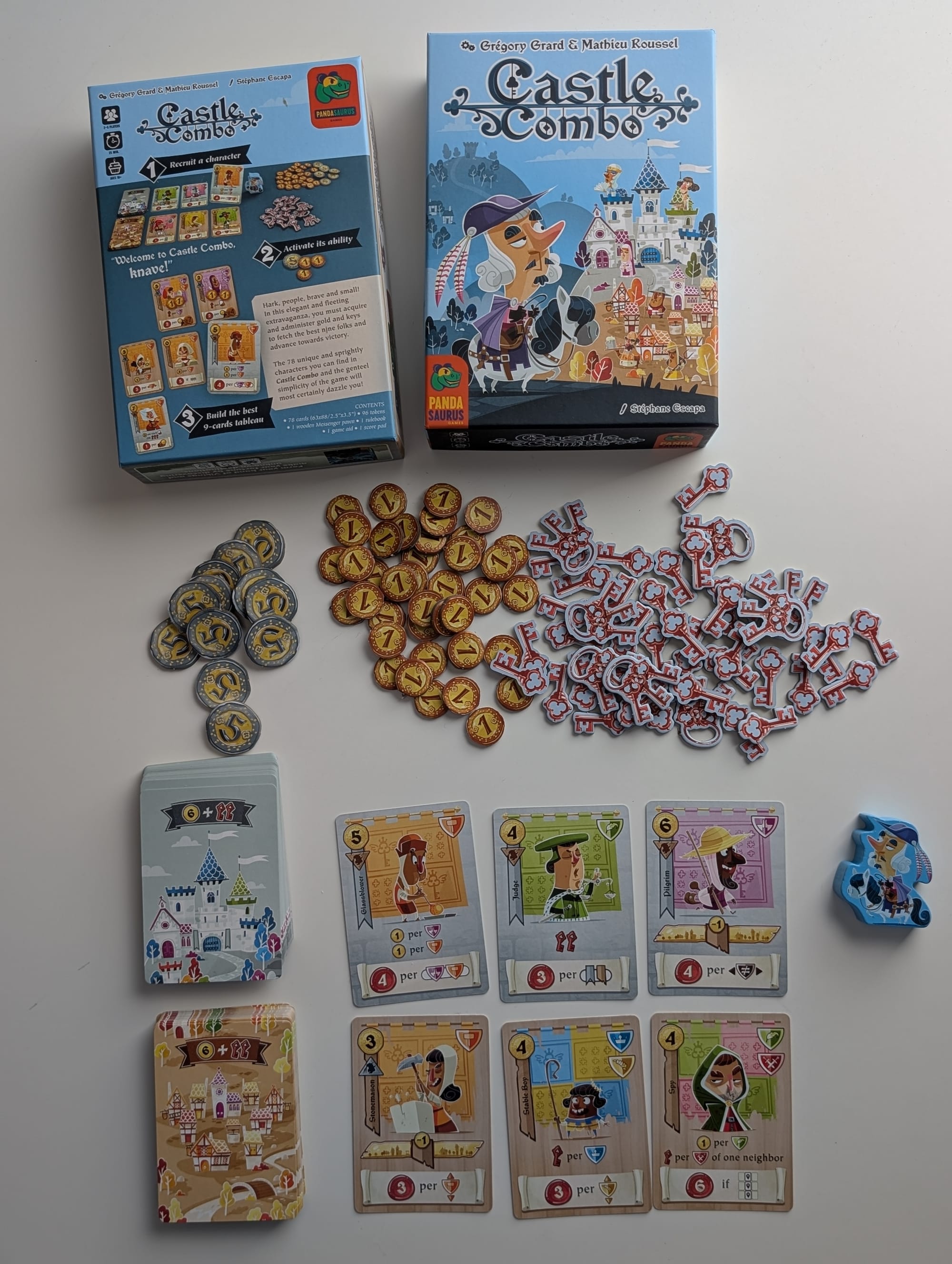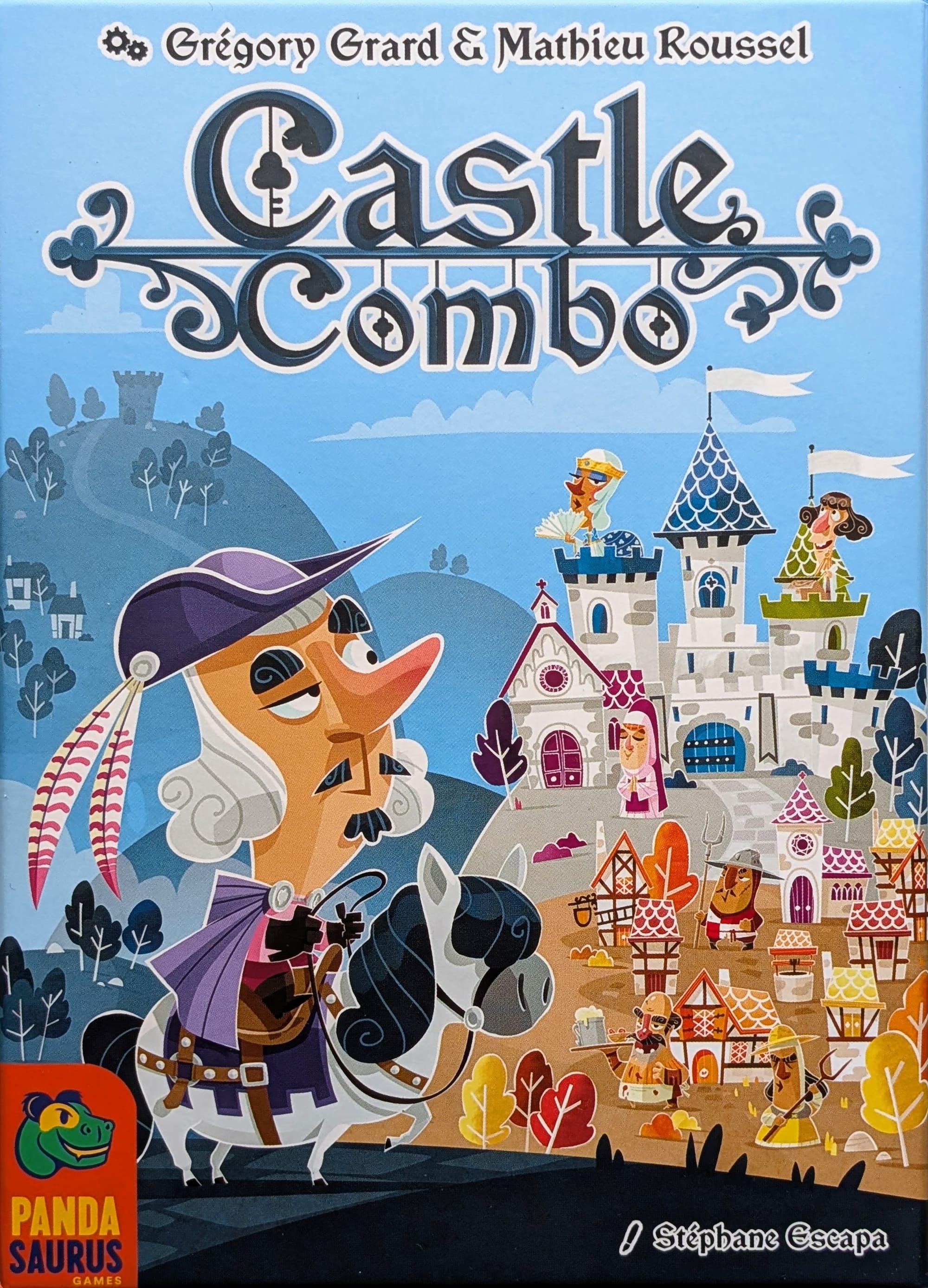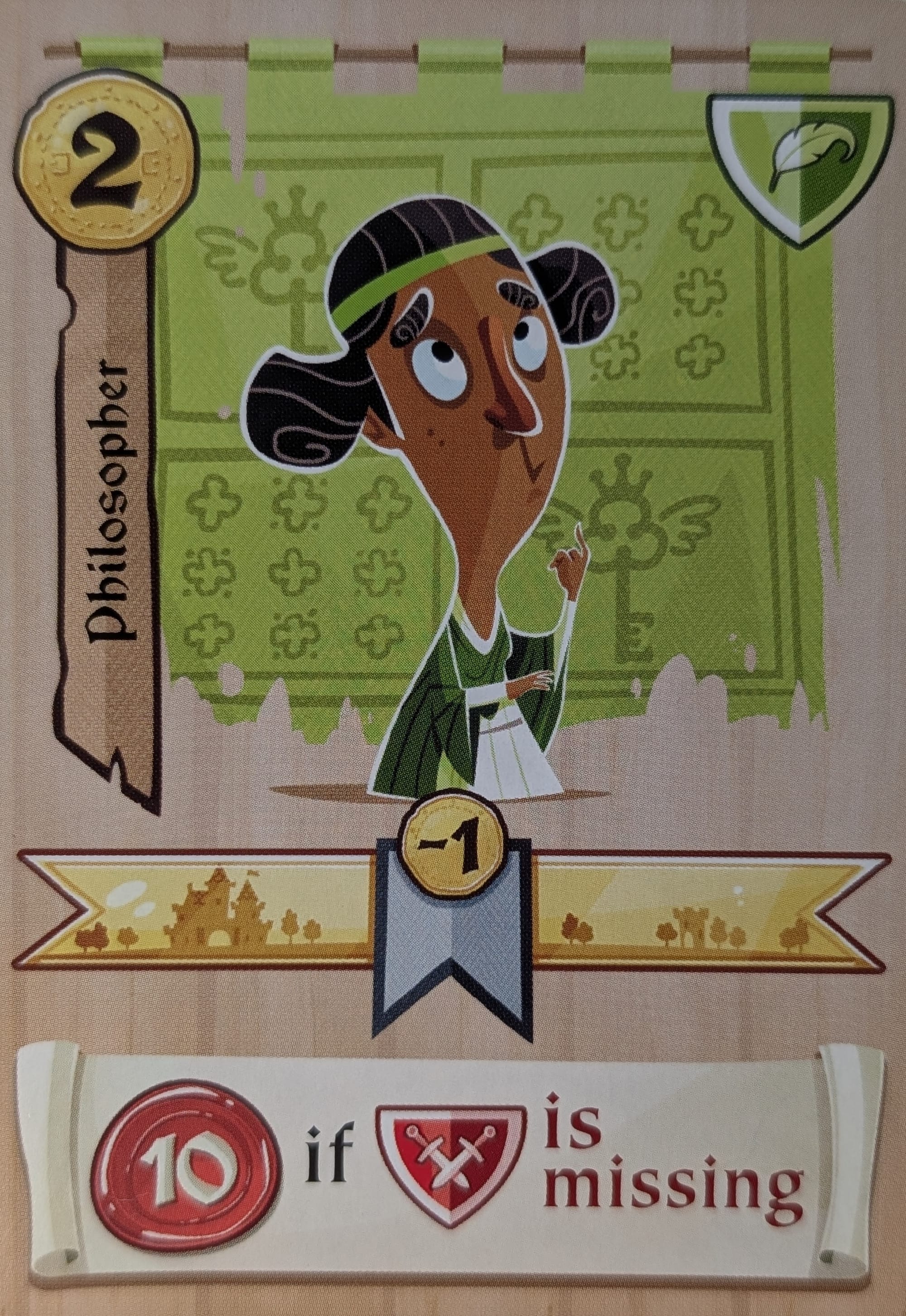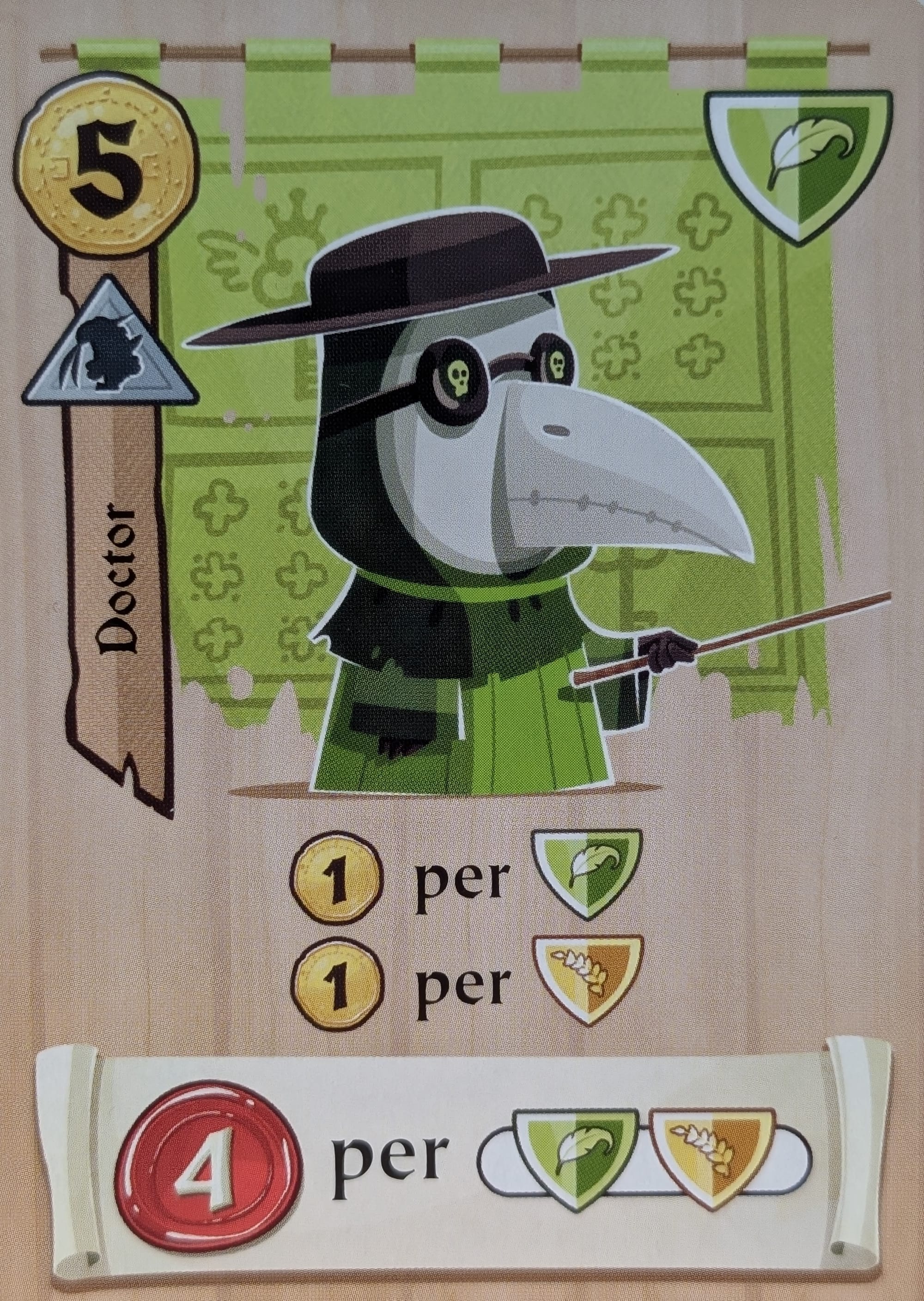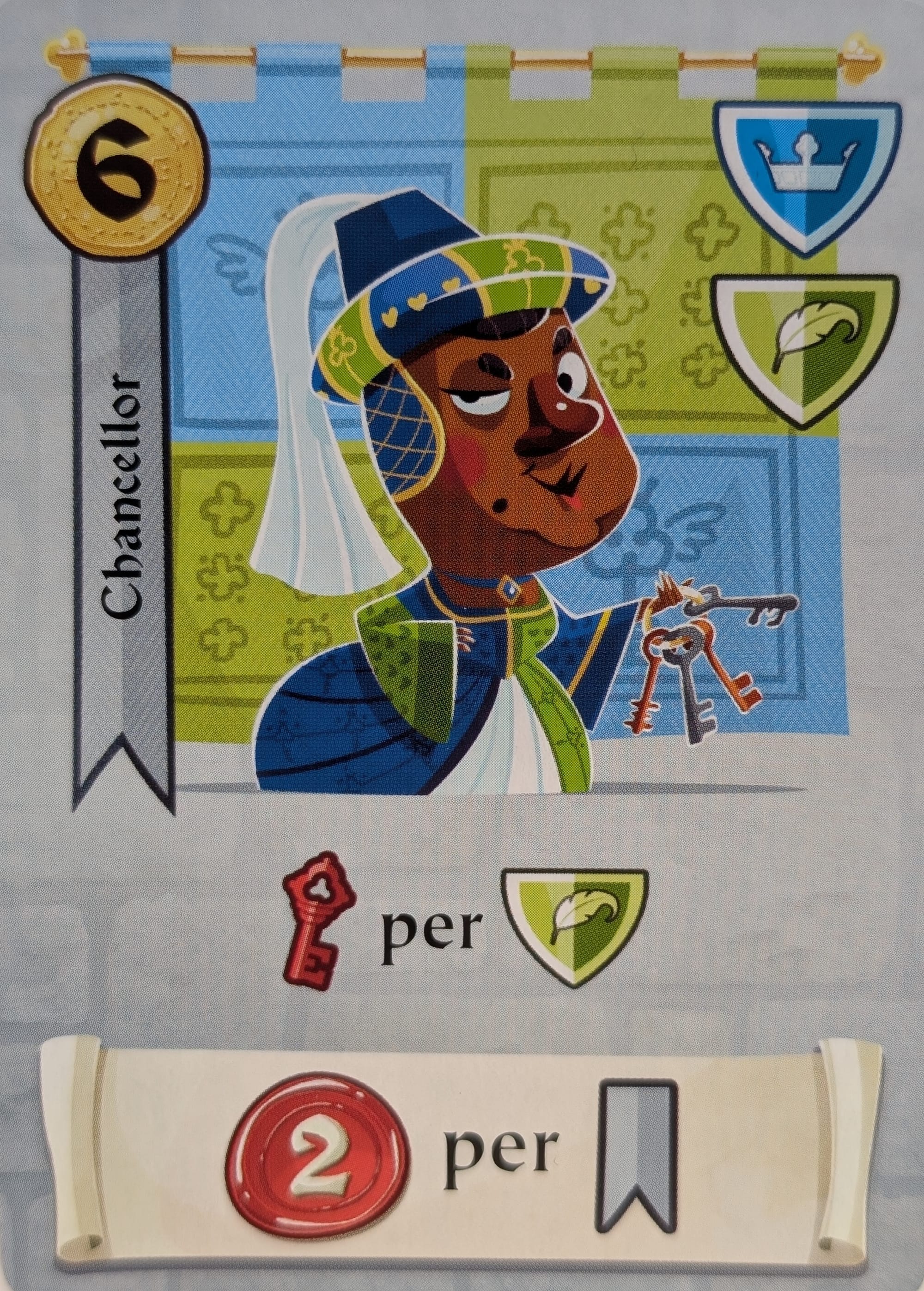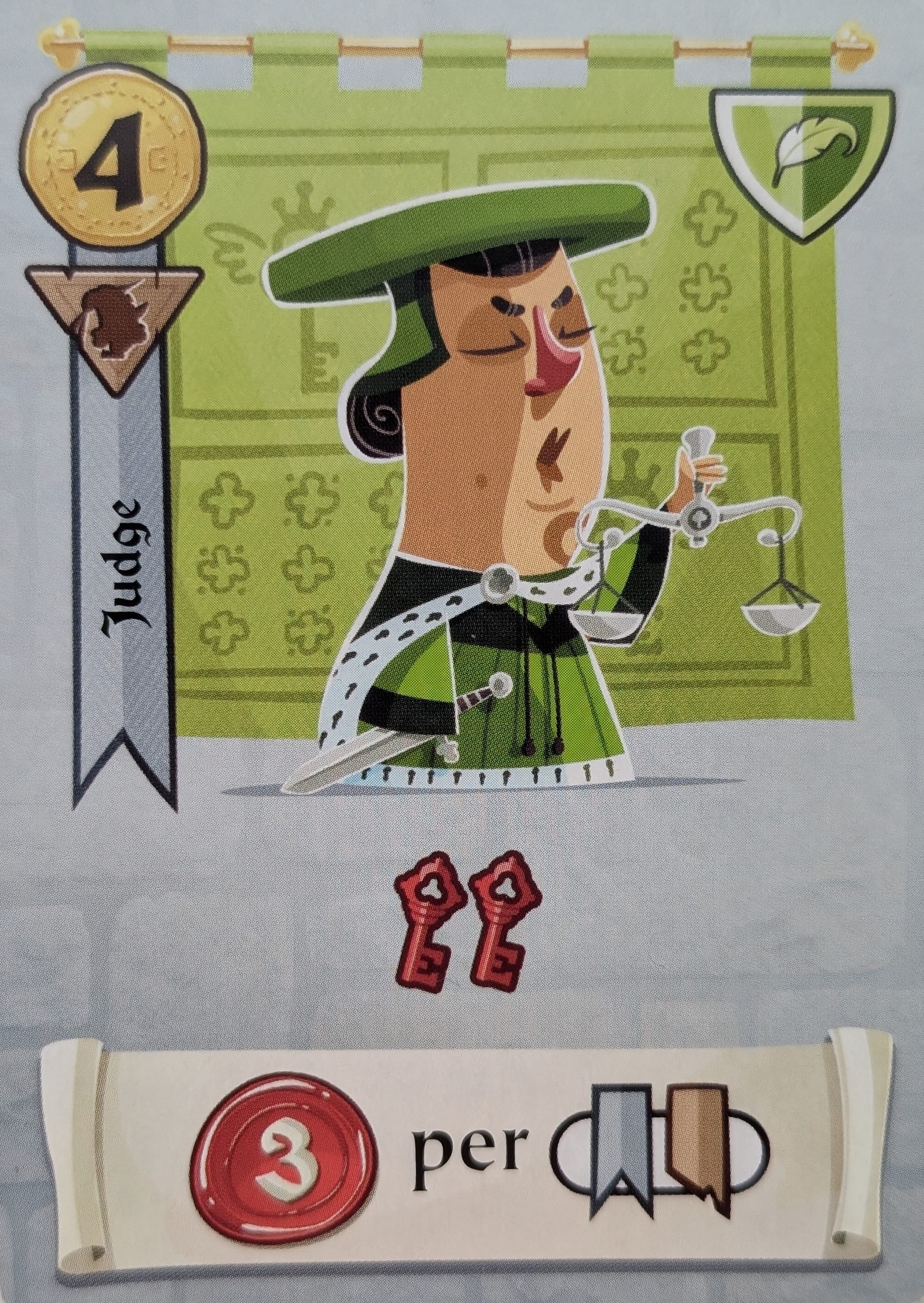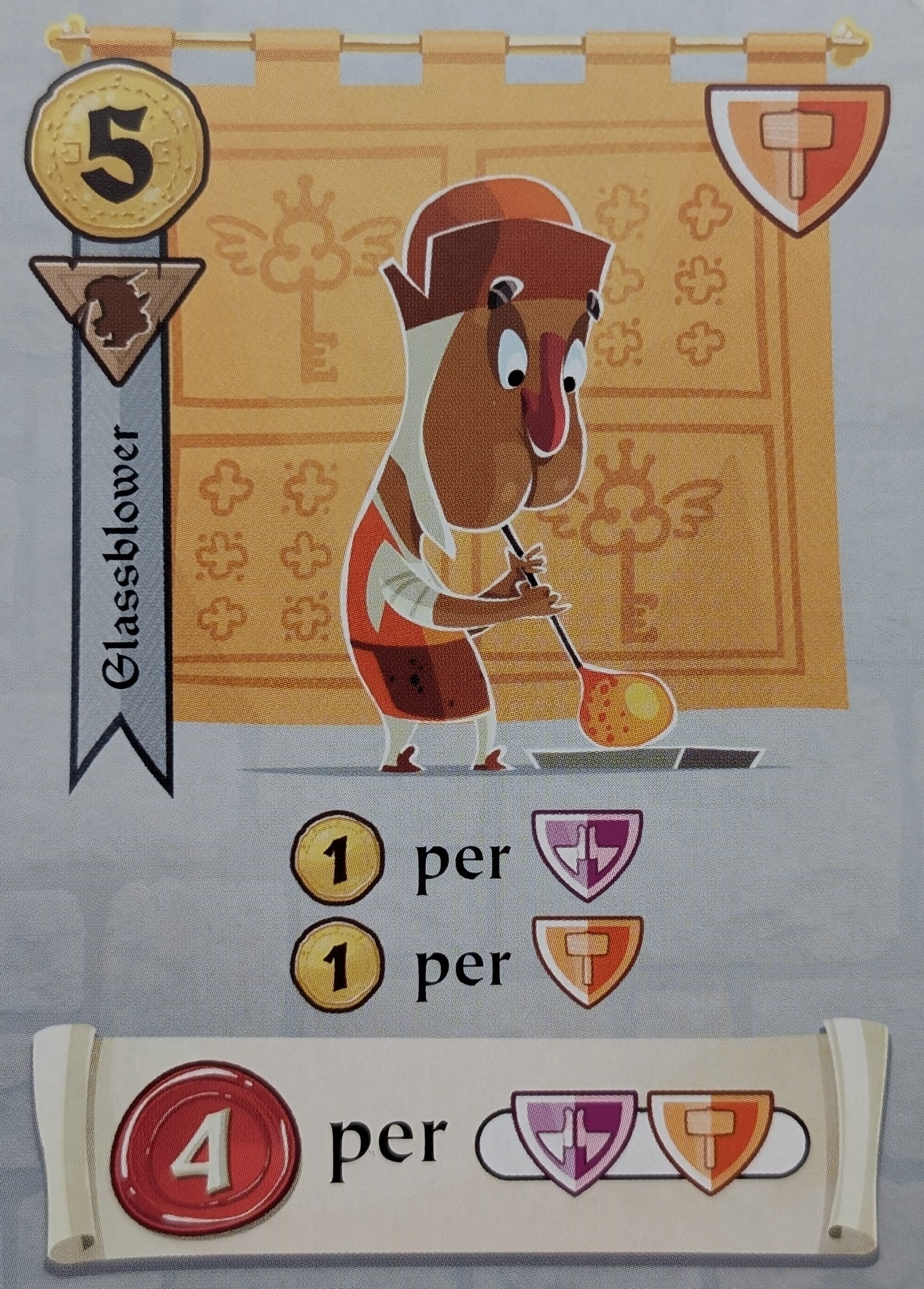Castle Combo: More Than the Sum of Its Parts

Gaming Shorthand
When you dive into board games, as with any activity or hobby, you start to learn the language of games. I couldn't tell you much about woodworking. Looking at this glossary of terms, there's a lot of J words. Jamb, jigsaw, joiner, joist. Those are all important and useful words for woodworkers that a layman like me isn't too interested in.
Just as woodworking has its own terminology, board games are no different. Deck builder, Euro game, role-playing, dungeon crawler. These words both help us categorize and explain games without having to read the whole rule book. They can also be a source of confusion. Does the term "board game" also include card-only games like Scout? ¯\_(ツ)_/¯
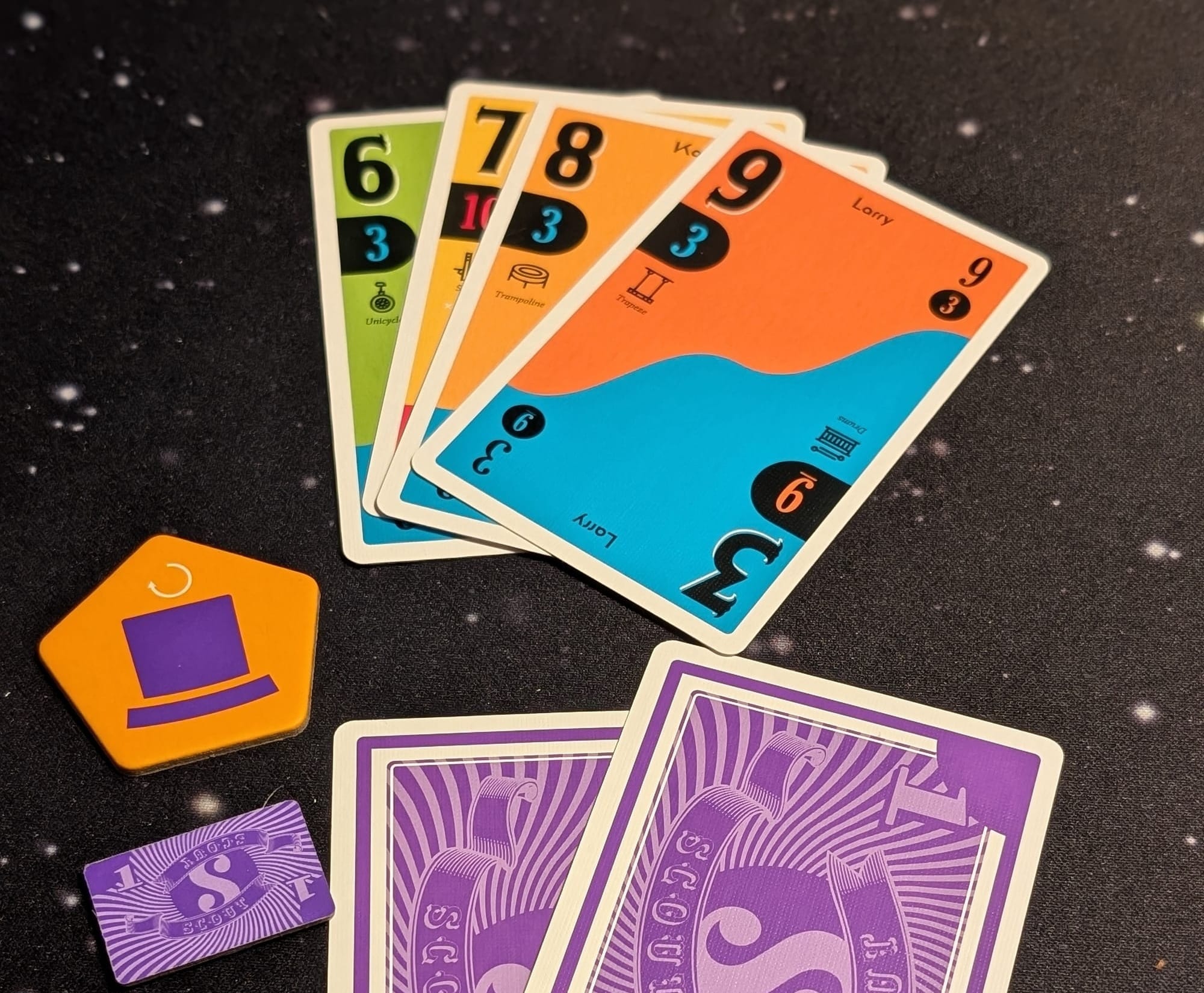
A Lot of Words to Say Nothing
Castle Combo, according to BoardGameGeek.com, has the following mechanics:
While I do understand what all of these are, they don’t really tell me how they fit together or what the focus of the game is. This could describe 100 different games. There is an importance in how you experience the game that is hard to wrap up concisely. Sometimes, the quickest and easiest way to describe a game is by comparing it to other familiar ones.
The Many Resources of Red Rising
Castle Combo, like a few other games I have played, is singularly focused on a set of cards acting as both the goal and scoring triggers of the game. That is to say, the singular focus of the game is picking the cards that will eventually give you the most points or at least preventing your opponents from acquiring their most useful cards.
The first time I experienced this type of game was Red Rising. Red Rising is based on the novels of the same name. Without reading the book, I can tell from the game mechanics that society is organized into classes, and those classes are assigned specific colors. Wikipedia confirms this:
"a rigid social hierarchy of 14 Colors with specialized roles."
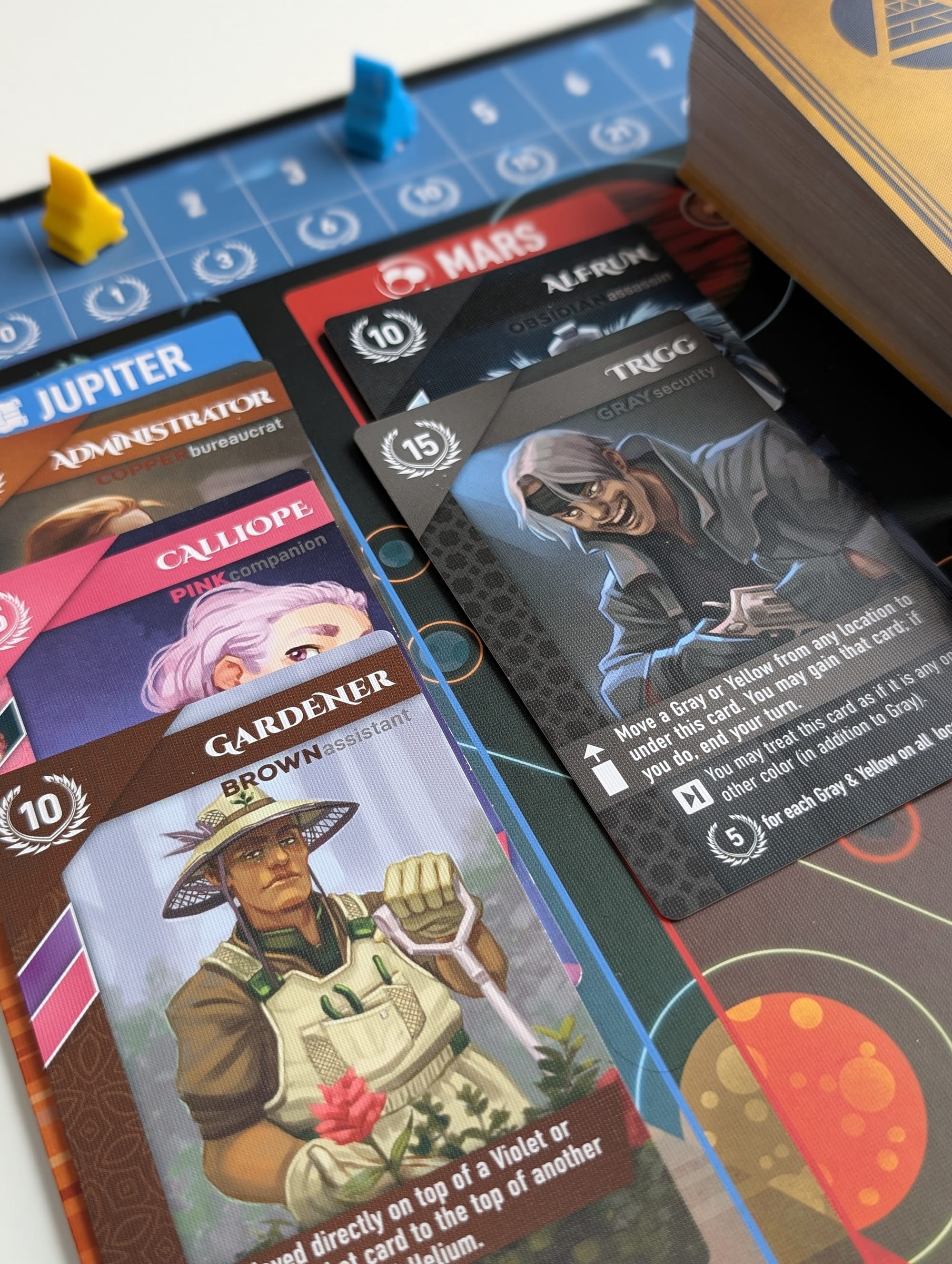
The game consists of discarding one card and picking up one card. Each card has various attributes like color, name, and some abilities. At the end of the game, much of the scoring comes from the synergies between the five-ish cards in your hand. Red Rising complicates this simple mechanic with various resource and scoring tracks based on where you claim cards from. I actually find the various micro-games happening at each location a distraction from the most interesting part of the game: the card synergies.
Less is More With Castle Combo
Castle Combo hyper-focuses on card synergies. I mean, even the name of the game, Castle Combo, tells you what you'll be doing in this game. The game consists of 9 turns per person. Each turn, you take one card and put it into a 3x3 grid, then you score each card. That's the whole game. Castle Combo feels like it measured the fun/complexity ratio expertly and edited out any unnecessary cruft.
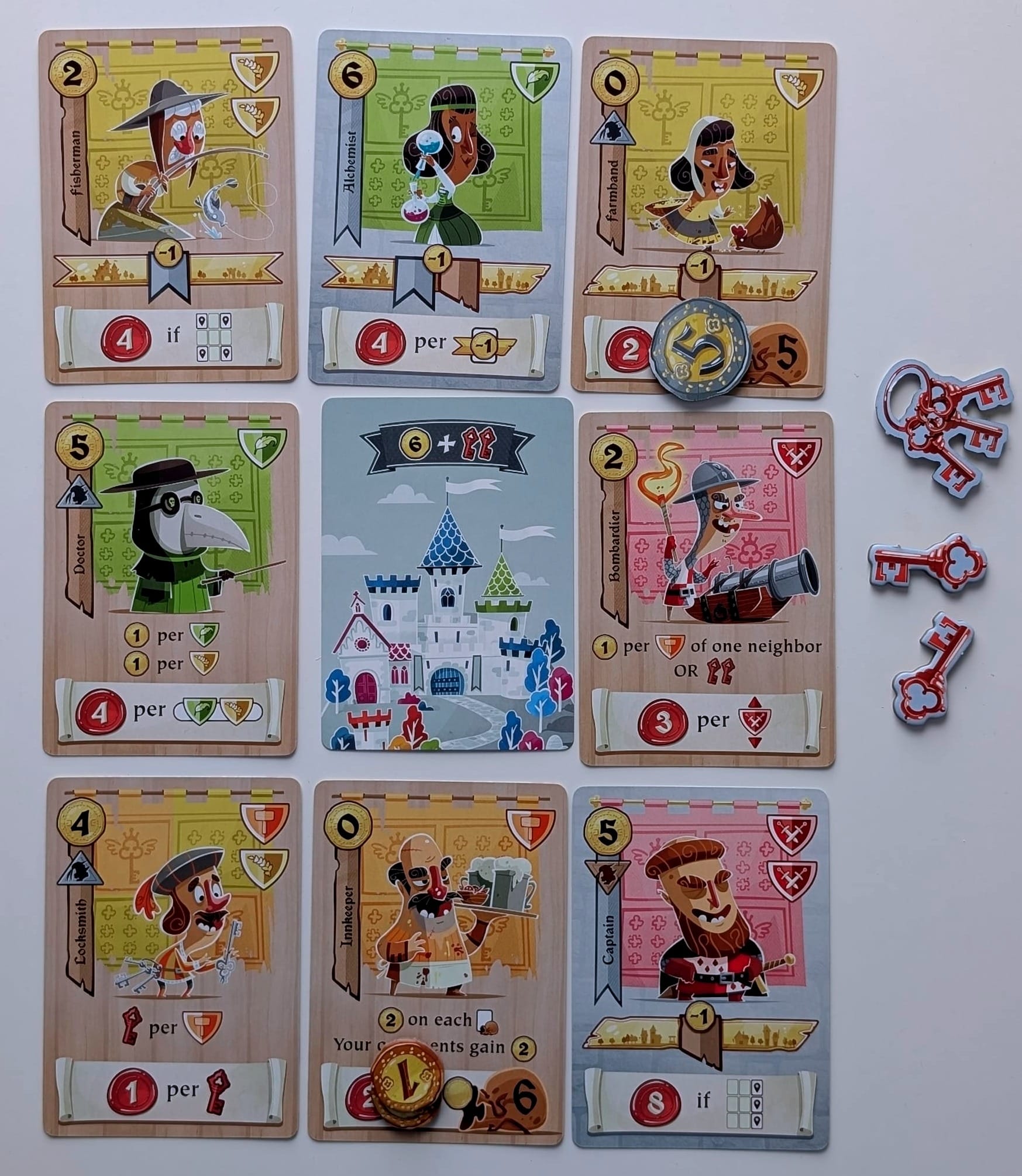
There are still some resources—coins and keys—that add just enough texture to the game and provide several interesting scoring strategies to focus on. That never distracts from the core mechanic each turn of picking one card from six.
The cards, while slightly intimidating at first, are well crafted to make them immediately readable. Each card always gives you one immediate action and an end-game scoring condition. They always have at least one shield icon, and they come from either the castle or the village. The consistency makes the game immensely easy to read. Not only does this make building your own collection of goofy characters simple, but scanning your opponent's collection in just a couple of seconds to block a huge scoring opportunity is a feasible strategy.
With only 9 turns, this game can easily be wrapped up in 20-30 minutes. The setup and teardown are incredibly easy; watch here as I set up the game in seconds.
Castle Combo is currently one of my favorite games, largely because of the way it distills the "interesting choices" that make up games into a shining diamond of fun.
Inspired Characters
While not my style, the art is thematic, fun, and goofy. There is an excellent diary about the artist, Stéphane Escapa, and his experience creating these characters. Many of the characters are inspired by real or fictional people, and seeing the behind-the-scenes work is really fascinating. I really suggest you read through it.
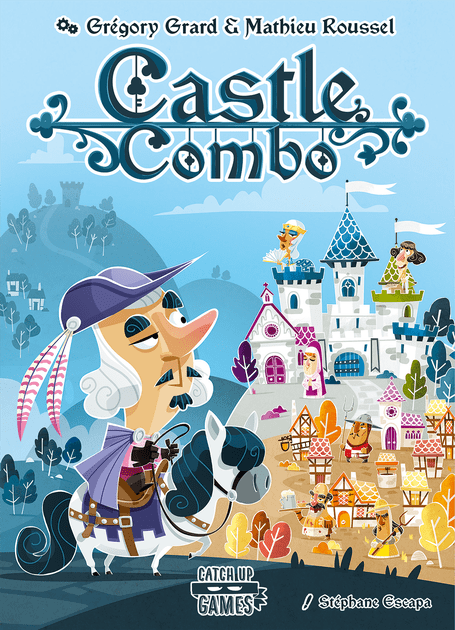
The Experience is What Matters
I want to call out a couple of other interesting games that I would liken to Castle Combo. One I haven't played yet, Fantasy Realms, has NO resources; each turn is simply a choice of drawing and discarding a card. The other is the highly portable Skulls of Sedlec by Button Shy Games. This tiny little 18-card game follows a very similar pattern: draw a card, place it accordingly, and then score based on the layout of the cards.
What sets these games apart from the hundreds of other games that have "Drafting" and "Set Collecting" is their singular focus on card synergies. This isn't to say a game like Terraforming Mars, which has set collection, is bad; it's just that Terraforming Mars is an experience that requires some coffee, a lunch break, and a friend or two willing to wrack their brains with you to collect increasingly absurd amounts of bits. Terraforming Mars and Castle Combo are so different that the language we use to categorize them often doesn’t capture the experience they create.
While I know it's useful to have words to describe the mechanics of a game, when I hear a game described by its list of contained mechanism, it gives me this feeling:
Jane observation after a playtest 🎲✂️ session: "Sometimes all the designers seem too focussed on 'designing' the game and forget that it should be fun"
— Mandela F-G (@mandelafg.bsky.social) 2025-03-14T12:32:36.486Z
As a designer, or at least an aspiring one, I have been really interested in trying to create a similar experience to these games that are hyper-focused set collection. I hope to document my progress in a future design diary as I work toward creating a similarly focused game.
